


Frederick Douglass
Brother Frederick Douglass was one of the greatest and most influential African Americans of the nineteenth century (and of American history). He stood alone as not only a heroic abolitionist, but an audacious freedom fighter in general. From his birthday in Maryland on 1818 to his passing on 1895 in Washington, D.C., Frederick Douglass personified excellence, courage, strength, and intellectual greatness. Traveling the world was to oppose the abominable act of slavery was definitely a part of his life. His voice was powerful and stirred up people to advance the creed of equality. His autobiography, Narrative of the Life of Frederick Douglass, an American Slave (1845) and his second book, My Bondage and My Freedom (1855) outlined the extensive scope of his life story. Also, he worked relentlessly during the Civil War to defeat the nefarious Confederacy (who brutalized and enslaved black people. Their own documents condoned slavery too). That is why he organized speeches and rallies in order for him to encourage black Americans to join the Union Army in fighting for the noble cause of freedom. Later, he saw the Union to become victorious. After the Civil War, Frederick Douglass defended the rights of not only black people, but of women, immigrants, and the oppressed in general. Land reform, the abolition of the death penalty, peace, and other causes that he fought for galvanized future generations. He was a leader, an ambassador, and an early civil rights advocate. Frederick Douglass was in fact totally American. He was honest to expose the hypocrisies of America while being inspired to seek a better America simultaneously. Frederick Douglass was inspired by so many heroes including Anna Douglass. Anna Douglass was a trailblazing black woman, whose insights and magnanimous courage ought to never be forgotten. Frederick Douglass' contributions to our world are very clear and transcendent. Now, it is time to celebrate 200 years after his birth and be inspired to fight for the justice that he continuously advocated in an interminable fashion. Agitate was his call for change and we must always agitate for peace, for justice, for righteousness, and for human freedom unequivocally.

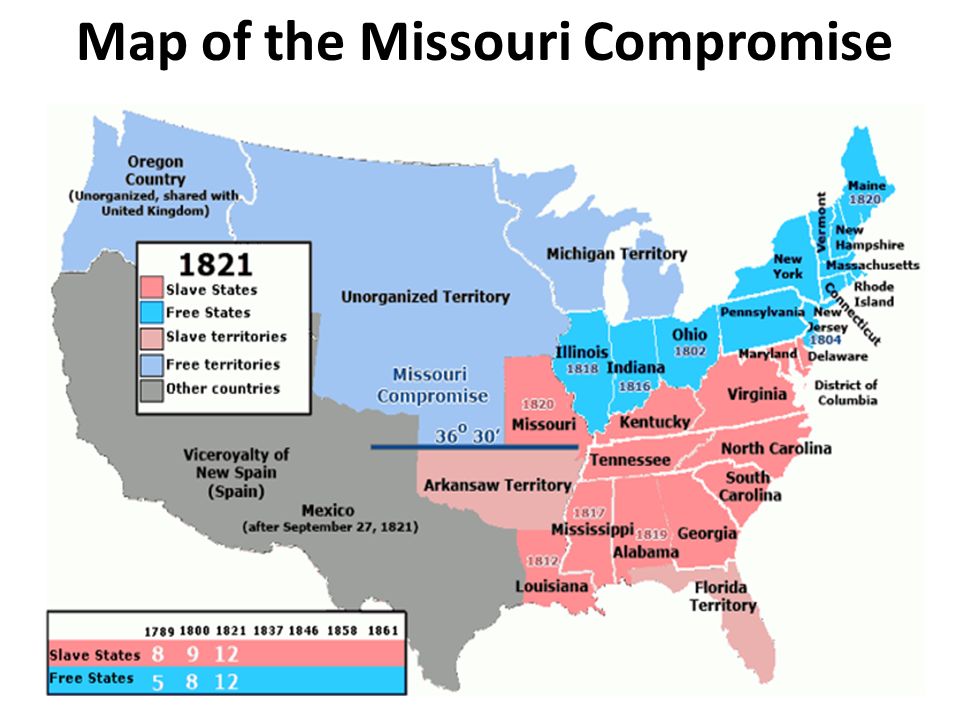
Early Life
Fredrick Douglas was born in February of 1818 in the Eastern Shore of the Chesapeake Bay in Talbot County, Maryland. He was a slave. Douglass was once given his named by this mother Harriet Bailey. Later, he took the surname of Douglass. His whole name was Frederick Augustus Washington Bailey. Some believe that his grandmother’s cabin east of Tappers Corner was the place of his birth. He wrote of his mother. He wrote of his mother of getting him to sleep. Back then, it was common for enslaved families to be split apart, so Frederick Douglass experienced an early separation from his mother. Frederick then lived with his maternal grandmother, whose name was Betty Bailey. By 6 years old, he was separated from his grandmother and moved into the Wye House plantation. At that location, Aaron Anthony worked as an overseer. Douglass’ mother died when he was only 10. Anthony died too. Douglass was sent to Lucretia Auld or the wife of Thomas Wuld. They made him to serve Thomas’ brother Hugh Auld in Baltimore. By 12 years old, he was taught the alphabet by Sophia (who was Hugh Auld’s wife). Douglass said that Sophia a was kind and tender hearted woman. He said that she treated him “as she supposed one human being ought to treat another.” Hugh didn’t agree with the tutoring, because he believed that literacy would encourage slaves to desire freedom. So, Sophia stopped reading to Frederick Douglass. She even snatched a newspaper away from Douglass. She came to believe in the view that education and slavery were incompatible.
Douglass, according to his autobiography, learned to read from white children in the neighborhood and by observing the writings of the men whom he worked. Douglass continued, secretly, to teach himself how to read and write. He later often said, "Knowledge is the pathway from slavery to freedom." Later, Frederick Douglass soon read newspapers, pamphlets, political materials, and books of many types. He was inspired to oppose slavery. He said that the anthology of the Columbian Orator at the age of 12 defined his views on human rights and freedom. The Columbian Orator was first published in 1797. It had essays, dialogues, etc. It was a classroom reader to help students to learn reading and grammar. William Freeland was the person Douglass was sent to next. Freeland taught slaves on his plantation to read the New Testament at a weekly Sunday school. Word spread. More than 40 slaves attended lessons to read. This went onward for six months until other plantation owners used clubs and stones to throw out the congregation permanently (on Sunday). On 1833, Thomas Auld took Douglass back from Hugh (as a means to punish Hugh according to Douglass’s literature). Thomas Auld sent Douglass to work for Edward Covey. Covey was a poor farmer who whipped black people. He whipped Douglas regularly. It nearly broke Douglass psychologically. The 16 year old Frederick Douglass then fought back in self-defense and won the physical confrontation against Covey. Covey never tried to beat him again.

Frederick Douglass escaped multiple times. He tried to escape from Freeland and he was caught. He escaped from Covey and he was caught again. This was in 1836. In 1837, Frederick Douglass met and fell in love with Anna Murray. Anna Murray was a heroic black woman. She was a free black woman, who lived in Baltimore, and she was about five years older than he was. On September 3, 1838, Frederick Douglass escaped successfully to freedom. First, he boarded a trained from the newly merged Philadelphia, Wilmington and Baltimore Railroad (P.W.&B.) railroad line to the Northern cities. The area where he boarded was a short distance east of the previous temporary P.W.& B. train depot in the recently developed neighborhood between the modern neighborhoods of Harbor East and Little Italy. The depot was located at President and Fleet streets. This was east of the Basin of the Baltimore harbor. It’s found on the Northwest Branch of the Patapsco River. The depot was later replaced by the historic President Street Station. It was constructed from 1849-1850. It was also noted as a site of other slave escapes along one of the many routes of the famous “Underground Railroad” and during the Civil War. Douglass then reached Havre De Grace in Maryland (at Harford County, in the northeast corner of the state). It was located on the southwest shore of the Susquehanna River, which flowed into the Chesapeake Bay.
This was placed some 20 miles from the free state of Pennsylvania. To him, it was easier to go through Delaware first. Delaware was a slave state. Douglass wore a sailor’s uniform. It was given to him by Anna Murray. She gave part of her savings to cover his travel cost. He used identification papers and protection papers that he had obtained from a free black seaman. Douglas crossed the wide Susquehanna River by the railroad’s steam-ferry at Havre de Grace to Perryville on the opposite shore of Cecil County. He used a train to cross state lines into Wilmington, Delaware. He was at a large port at the head of Delaware Bay. From there, because the rail line was not yet completed, he went by steamboat along the Delaware River further northeast to the city of Philadelphia, Pennsylvania. Philadelphia was an anti-slavery stronghold filled with free black people and Quakers. Later, Frederick Douglas traveled into a safe house of noted abolitionist David Ruggles in New York City. Frederick Douglass was filled with joy when he arrived in New York City since he felt that he entered a new world as a free black man. Frederick Douglas sent for Anna Murray to follow him north to NYC. She brought her necessary basics for them to set up a home. They married on September 15, 1838 by a black Presbyterian minister. This was 11 days after Douglass came into New York City. At first, they adopted Johnson as their married name to divert attention.


Life as an Abolitionist
Frederick Douglass and Anna Douglass settled into New Bedford, Massachusetts. They stayed with Nathan and Mary Johnson. Afterwards, the couple adopted Douglass as their married name. Frederick Douglass read “The Lady of the Lake” and was inspired to use Douglass since that was the main character of the poem. He saw a white Methodist Church segregated. He was disappointed. So, he joined the African Methodist Episcopal Zion Church. That was an independent black denomination. It was first formed in New York City. Sojourner Truth and Harriet Tubman were members of that church too. By 1839, Frederick Douglass was a licensed preacher. He has shown great oratorical skills. He was involved in many religious positions like: steward, Sunday school superintendent, and sexton. He gave his speech in 1840 in Elmira, New York (which was a station on the Underground Railroad. It was later a black congregation being created there and by 1940, it was the region’s largest church). Frederick Douglass worked hard. He joined many organizations in New Bedford. He attended numerous abolitionist meetings. He subscribed to William Lloyd Garrison’s weekly journal “The Liberator.” He also worked with William Lloyd Garrison, who was a famous abolitionist. Garrison promoted the Liberator nationwide. Garrison agreed with Douglass’ anti-colonialism views in 1839. By 1841, Garrison was heard by Douglass as Garrison was speaking. This was at the Bristol Anti-Slavery Society. Douglass told his story and was encouraged to be an anti-slavery lecturer. So, he spoke nationwide and worldwide. Days later, he spoke at the Massachusetts Anti-Slavery Society’s annual convention in Nantucket. He was 23 years old and Douglass gave an eloquent speech about his life as a slave.
In 1845, he toured the East and the Midwest in the American Anti-Slavery Society’s Hundred Conventions project. This was a six month tour. He joined other speakers too. During the tour, slavery supporters constantly accosted Douglass. He did a lecture in Pendleton, Indiana. An angry mob assaulted him. The Hardys or a local Quaker family rescued him. The mob injured his hand causing it to break. It didn’t heal properly and it caused him pain for the rest of his life. There is a stone marker in Falls Park in the Pendleton Historic District that outlines a description of the event. Frederick Douglass wrote his first autobiography called “Narrative of the Life of Frederick Douglass, an American Slave.” It was published in 1845. Many racists didn’t believe that a black man could produce eloquent literature back then, but they were wrong. The book was positively reviewed back then. It was an immediate bestseller in America. In 3 years, it was reprinted nine times. There were 11,000 copies circulating in America back then. It was translated into French and Dutch being published in Europe too. He published three versions of his autobiography during his lifetime (and revised the third of the three). He expanded on the previous one. The 1845 Narrative was his biggest seller. Frederick Douglass gained his freedom in 1846. In 1855, Douglass published My Bondage and My Freedom. In 1881, after the Civil War, Douglass published Life and Times of Frederick Douglass, which he revised in 1892.
Frederick Douglass traveled into Ireland and Great Britain to oppose slavery. He wrote about being treated much better in those areas than in America. He sailed on the Cambria ship to Liverpool in August 16, 1845. This was the time of the Irish Potato Famine in Ireland just starting. In 1847, he was about 29 years old. He befriended the Irish nationalist Daniel O’Connell, who was a great inspiration to him. He spoke in Ireland and Britain in churches and chapels. He dined at places and came into various locations without segregation. It is important to note that the British Empire had racism worldwide. He met Thomas Clarkson in 1846. Clarkson was one of the last living British abolitionists who persuaded Parliament to abolish slavery in the Great Britain’s colonies. People like Anna Richardson and her sister in law Ellen of Newcastle upon Tyne raised funds to buy Frederick Douglass his freedom. Some of his supporters wanted him to stay in England. Yet, his wife was in Massachusetts and three million of his black people were in bondage in America. So, he returned into America during the spring of 1847. This was soon after the death of Daniel O’Connell.
Many historical plagues celebrate Douglass’ visit in Cork and Waterford, Ireland plus in London. They were revealed in the 21st century. The third plaque adorns Nell Gwynn House, South Kensington in London, where Douglass stayed with the British abolitionist George Thompson. He came into America by 1847. Frederick Douglass published his first abolitionist newspaper called the North Star. He published it from the basement of the Memorial AME Zion Church in Rochester, New York. The North Star's motto was "Right is of no Sex – Truth is of no Color – God is the Father of us all, and we are all brethren." The AME Church and North Star vigorously opposed the mostly white American Colonization Society and its proposal to send blacks back to Africa. This and Douglass's later abolitionist newspapers were mainly funded by English supporters, who gave Douglass five hundred pounds to use as he chose. Douglass also soon split with Garrison. They had an ideological disagreement. Garrison viewed the Constitution was pro-slavery (which it was. Garrison publicly burned the Constitution), so he wanted to disengage in politics even forming a separate state filled with no slavery. Douglass wanted to engage in politics in order for slavery to be abolished in America completely.

Frederick Douglass wanted to abolish the institution of slavery and make that change within the Constitution. On September 1848, Douglass sent an open letter to Thomas Auld (who owned him). He criticized him for his bad conduct. In one passage, he asked Auld if members of his family were enslaved, then how he would feel. Of course, slavery is evil. Frederick Douglass supported women’s rights. He was the only African American to attend the Seneca Falls Convention or the first women’s rights convention in upstate New York. Elizabeth Cady Stanton was the leader of the assembly. They promoted women’s suffrage or giving women the right to vote. James and Lucretia Mott opposed suffrage, but Douglass agreed with it. He said that he could not accept the right to vote as a black man if women could not also claim that right. He suggested that the world would be a better place if women were involved in the political sphere: “…In this denial of the right to participate in government, not merely the degradation of woman and the perpetuation of a great injustice happens, but the maiming and repudiation of one-half of the moral and intellectual power of the government of the world…” After these words, the attendees passed the resolution to fight for women to have the right to vote. His opinion as the prominent editor of the paper likely carried weight, and he stated the position of the North Star explicitly: "[w]e hold woman to be justly entitled to all we claim for man." This letter, written a week after the convention, reaffirmed the first part of the paper's slogan, "right is of no sex."
Frederick Douglass supported the 15th Amendment to give black people the right to vote, but Stanton opposed it since it didn't allow women the right to vote. Douglass said that during this time it would be impossible to fight to allow black men and women the right to vote in the late 1800’s. So, Douglass wanted the 15th Amendment first and then fight for women the right to vote afterwards in forming truly universal suffrage. Stanton wanted to attach women's suffrage to that of black men so that her cause would be carried to success. Douglass thought such a strategy was too risky, that there was barely enough support for black men's suffrage. He feared that linking the cause of women's suffrage to that of black men would result in failure for both. Douglass argued that white women, already empowered by their social connections to fathers, husbands, and brothers, at least vicariously had the vote. African-American women, he believed, would have the same degree of empowerment as white women once African-American men had the vote. Douglass assured the American women that at no time had he ever argued against women's right to vote.
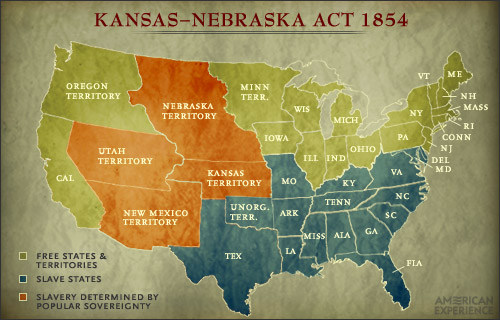
More on the Antebellum Period
Meanwhile, in 1851, Douglass merged the North Star with Gerrit Smith's Liberty Party Paper to form Frederick Douglass' Paper, which was published until 1860. He criticized the hypocrisy of the 4th of July of claiming freedom but having slavery in his famous speech on July 5, 1852. It was an address to the ladies of the Rochester Anti-Slavery Sewing Society. This speech eventually became known as "What to the slave is the 4th of July?"; one biographer called it "perhaps the greatest antislavery oration ever given." In 1853, he was a prominent attendee of the radical abolitionist National African American Convention in Rochester, NY. His was one of 5 names attached to the address of the convention to the people of the United States published under the title, The Claims of Our Common Cause, along with Amos Noë Freeman, James Monroe Whitfield, Henry O. Wagoner, and Vashon. He promoted education for African Americans. He fought for school desegregation in the North. He wanted schools to be open for all children regardless of color during the 1850’s. He met abolitionists John Brown and George DeBaptiste. It was on March 12, 1859. They met in Detroit at William Webb’s house. Douglass met Brown again. Douglass agreed with Brown on fighting slavery, but disagreed with the raid on Harpers Ferry since that would enrage the American public in his view. John Brown did the raid and he was martyred for the cause of human freedom. After the raid, Douglass fled for a time to Canada, fearing guilt by association as well as arrest as a co-conspirator. Years later, Douglass shared a stage in Harpers Ferry with Andrew Hunter, the prosecutor who secured Brown's conviction and execution.
In March 1860, while Douglass was once again traveling in England, his youngest daughter Annie died in Rochester, New York. Douglass sailed back from England the following month, traveling through Canada to avoid detection. He was photographed constantly and he wanted this to show his image and refute the stereotypes of blackface minstrelsy back then. He used religious imagery to promote freedom and he eventually converted to Christianity. He publicly opposed preachers who supported slavery. He called on churches in the United Kingdom from 1846 and 1848 to not support any American church that permitted slavery. Ministers in Belfast refused to admit slaveholders in their churches. He continued to criticize Thomas Auld for his brutality. Frederick Douglas’ theological views in essence were the ancestor of modern non-denominational liberation theology since he promoted liberation overtly using spirituality as a vehicle. The fireplace mantle features busts of two of his favorite philosophers, David Friedrich Strauss, author of "The Life of Jesus," and Ludwig Feuerbach, author of "The Essence of Christianity." In addition to several Bibles and books about various religions in the library, images of angels and Jesus are displayed, as well as interior and exterior photographs of Washington's Metropolitan African Methodist Episcopal Church. Throughout his life, Douglass had linked that individual experience with social reform. Like other Christian abolitionists, he followed practices such as abstaining from tobacco, alcohol and other substances that he believed corrupted the body and soul.

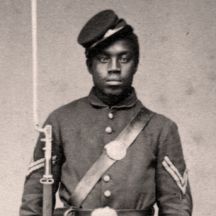

The Civil War
By the era of the Civil War, Frederick Douglass was one of the most famous black men in America. He used speeches to promote black freedom and women's rights. He was eloquent to speak his mind to crowds at many locations. He was loved by people in England and Ireland. Douglass and other abolitionists wanted to use the Civil War to end slavery once and for all. He fought for African Americans to be in the Union to fight for their freedom. He wanted this and he publicized his views in newspapers and many speeches. In August 1861, Frederick Douglass gave an account of the First Battle of Bull Run and said that some black people were already in Confederate ranks. Weeks later, Douglass brought up the subject again. He quoted a witness of seeing black Confederates with muskets on their shoulders and bullets in their pockets. Black Confederates are traitors to black people period. Douglass conferred with President Abraham Lincoln in 1863 on the treatment of black soldiers, and with President Andrew Johnson on the subject of black suffrage. President Lincoln's Emancipation Proclamation existed on January 1, 1864. It declared the freedom of every slave in Confederate held territory. Slaves in Union held areas and in Northern states were freed by the adoption of the 13th Amendment on December 6, 1865. Douglass described the spirit of those awaiting the proclamation: "We were waiting and listening as for a bolt from the sky ... we were watching ... by the dim light of the stars for the dawn of a new day ... we were longing for the answer to the agonizing prayers of centuries."
During the United States Presidential Election of 1864, Douglass supported John C. Fremont. He was the candidate of the abolitionist Radical Democracy Party. Douglass was disappointed that President Lincoln didn't publicly endorse suffrage or voting rights for black freedman. Douglass said that since African American men were fighting for the Union in the American Civil War, they deserved the right to vote. Frederick Douglass is completely right. The Civil War continued and Douglass fought for equality for our people. He made plans with Lincoln to move liberated slaves out of the South. During the war, Frederick Douglass was a recruiter the 54th Massachusetts Infantry Regiment. His oldest son, Charles Douglass, joined the the 54th Massachusetts Regiment, but was ill for much of his service.Lewis Douglass fought at the Battle of Fort Wagner. Another son, Frederick Douglass Jr., also served as a recruiter.
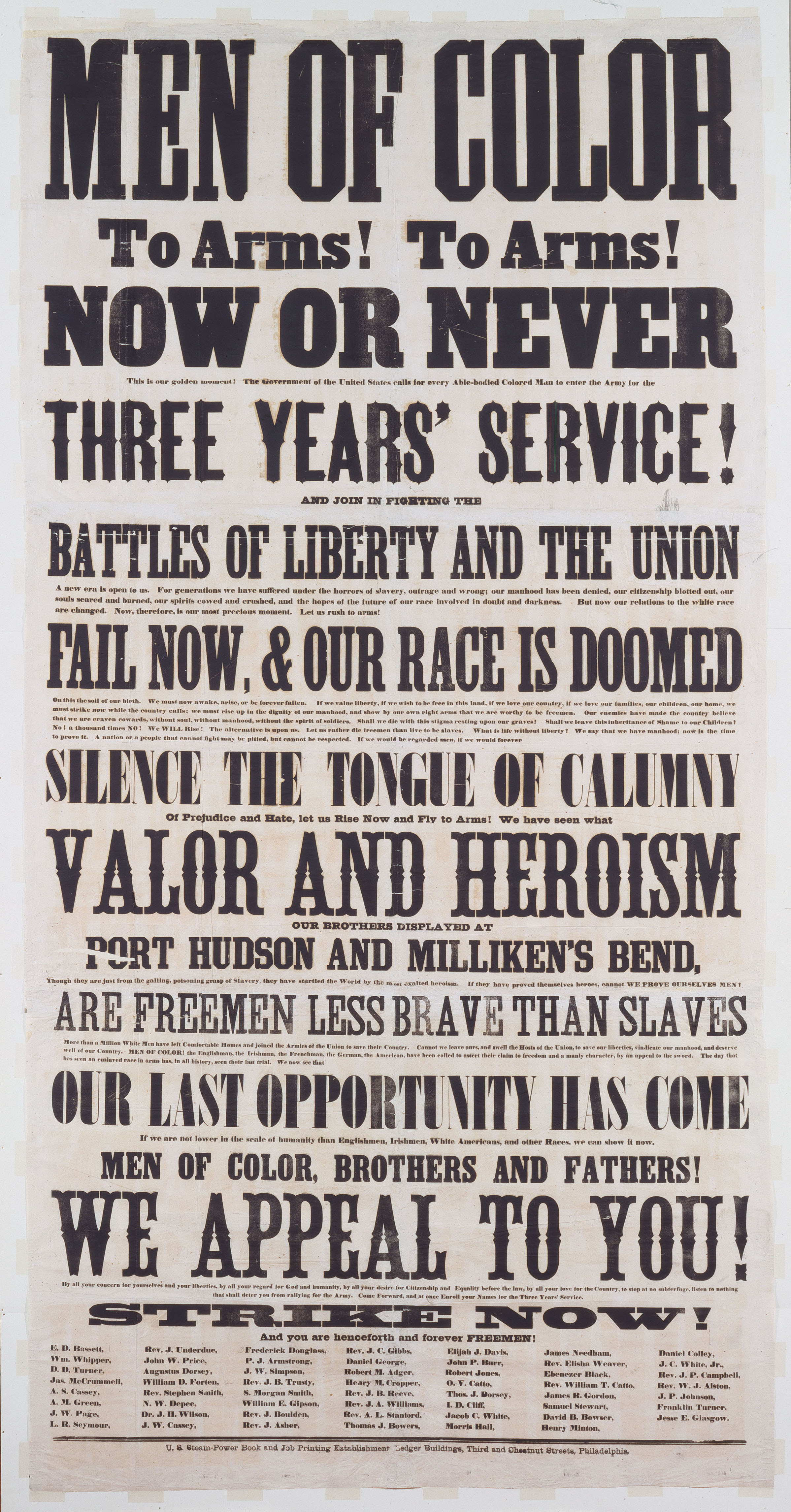
After the Civil War, the ratification of the 13th Amendment came about in 1865 which outlawed slavery. The 14th Amendment provided for citizenship and equal protection under the law. The 15th Amendment protected all citizens from being discriminated against in voting because of race. On April 14, 1876, Frederick Douglass delivered the keynote speech at the unveiling of the Emancipation Memorial in Washington's Lincoln Park. In that speech, Douglass spoke honestly about Abraham Lincoln. He talked about Lincoln's positive and negative attributes. He called Lincoln,"the white man's president." Douglass criticized Lincoln's tardiness in joining the cause of emancipation, noting that Lincoln initially opposed the expansion of slavery but did not support its elimination. But Douglass also asked, "Can any colored man, or any white man friendly to the freedom of all men, ever forget the night which followed the first day of January 1863, when the world was to see if Abraham Lincoln would prove to be as good as his word?"Douglass also said: "Though Mr. Lincoln shared the prejudices of his white fellow-countrymen against the Negro, it is hardly necessary to say that in his heart of hearts he loathed and hated slavery...."
The crowd, roused by his speech, gave Douglass a standing ovation. Lincoln's widow Mary Lincoln supposedly gave Lincoln's favorite walking-stick to Douglass in appreciation. That walking-stick still rests in Douglass's final residence, "Cedar Hill", now preserved as the Frederick Douglass National Historic Site.

The Reconstruction Era
After the Civil War, Frederick Douglass continued to fight for equality for African Americans and women. He was highly prominent in social activism. He received many political appointments. One was he was the President of the Reconstruction-era Freedman's Saving Bank. That bank was used to help newly freed African Americans. He was also chargé d'affaires for the Dominican Republic, but resigned that position after two years because of disagreements with U.S. government policy. During Reconstruction, white racist insurgents arisen in the South after the war. They organized first in secret vigilante groups like the Ku Klux Klan. Armed insurgency took different forms. There were powerful paramilitary groups like the White League and the Red Shirts. They were both active during the 1870's in the Deep South. They operated as "the military arm of the Democratic Party." They harmed the rights of Republican officeholders and disrupted elections. Back then, the Democrats were more reactionary and the Republicans were more progressive. Today, it is the opposite. More than 10 years after the end of the Civil War, the Democrats regained political power in every state of the former Confederacy and began to reassert white supremacy. They enforced this by a combination of violence, late 19th-century laws imposing segregation and a concerted effort to disfranchise African Americans. New labor and criminal laws also limited their freedom.
Frederick Douglass responded by supporting the Presidential campaign of Ulysses S. Grant in 1868. In 1870, Douglass started his last newspaper, the New National Era, attempting to hold his country to its commitment to equality, President Grant sent a Congressionally sponsored commission, accompanied by Douglass, on a mission to the West Indies to investigate if the annexation of Santo Domingo would be good for the United States. Grant believed annexation would help relieve the violent situation in the South allowing African Americans their own state. Douglass and the commission favored annexation, however, Congress remained opposed to annexation. Douglass criticized Senator Charles Sumner, who opposed annexation, stating if Sumner continued to oppose annexation he would "regard him as the worst foe the colored race has on this continent." Obviously, I believe in the independence of Santo Domingo (without colonialism and without imperialism) not annexed into the American Empire. In 1872, Frederick Douglass was the first African American nominated for Vice President of the United States, as Victoria Woodhull's running mate on the Equal Rights Party ticket. He was nominated without his knowledge. Douglass neither campaigned for the ticket nor acknowledged that he had been nominated. In that year, he was presidential elector at large for the State of New York, and took that state's votes to Washington, D.C.
His home on South Avenue in Rochester, New York was later burned down. Arson was suspected. A complete issue of the North Star was lost. Douglass then moved into Washington, D.C. During the Reconstruction era, Frederick Douglass spoke nationwide. He promoted work, voting rights, and the exercise of suffrage (since we must vote for the right person too). He spoke for over 25 years after the Civil War as a means to counter racism that was prevalent in unions. In a speech delivered on November 15, 1867, Douglass said: "A man's rights rest in three boxes. The ballot box, jury box and the cartridge box. Let no man be kept from the ballot box because of his color. Let no woman be kept from the ballot box because of her sex." Douglass spoke at many colleges around the country. These included Bates College in Lewiston, Maine, in 1873.
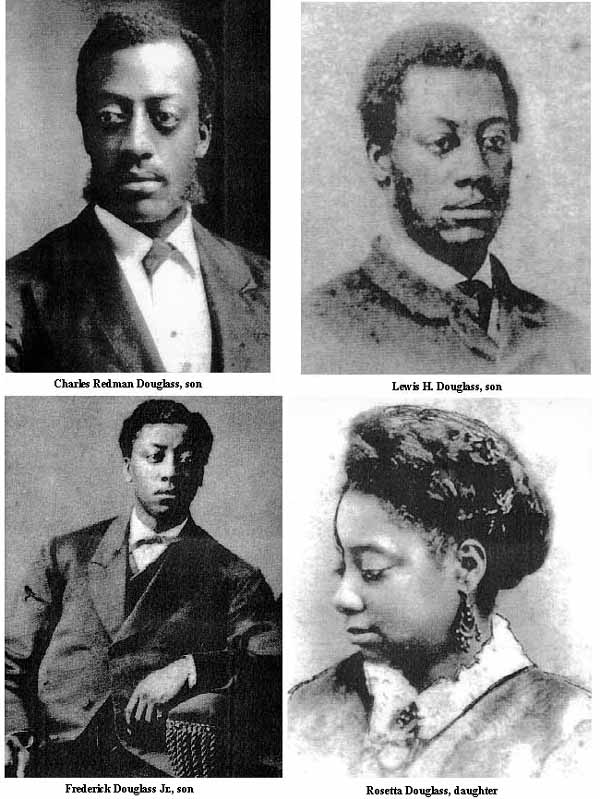
More on his life
Frederick Douglass and Anna Douglass had five children. They were Rosetta Douglass, Lewis Henry Douglass, Frederick Douglass Jr., Chalres Remond Douglass, and Annie Douglass (who died at the age of 10). Charles and Rosetta helped produce his newspapers. Anna Douglas was a life long advocate for freedom for black people. She supported her husband's public work. Douglass worked with Julia Griffiths and Ottlie Assing as allies. Anna Douglass passed away in 1884. In 1884, Frederick Douglass married again to the suffragist and abolitonist Helen Pitts. She was from Honeoye, New York. Pitts was the daughter of Gideon Pitts Jr., an abolitionist colleague and friend of Douglass. A graduate of Mount Holyoke College (then called Mount Holyoke Female Seminary), Pitts worked on a radical feminist publication named Alpha while living in Washington, D.C. The marriage provoked a storm of controversy, because of the obvious reason. Pitts' family stopped talking to her. Elizabeth Cady Stanton congratulated the couple.
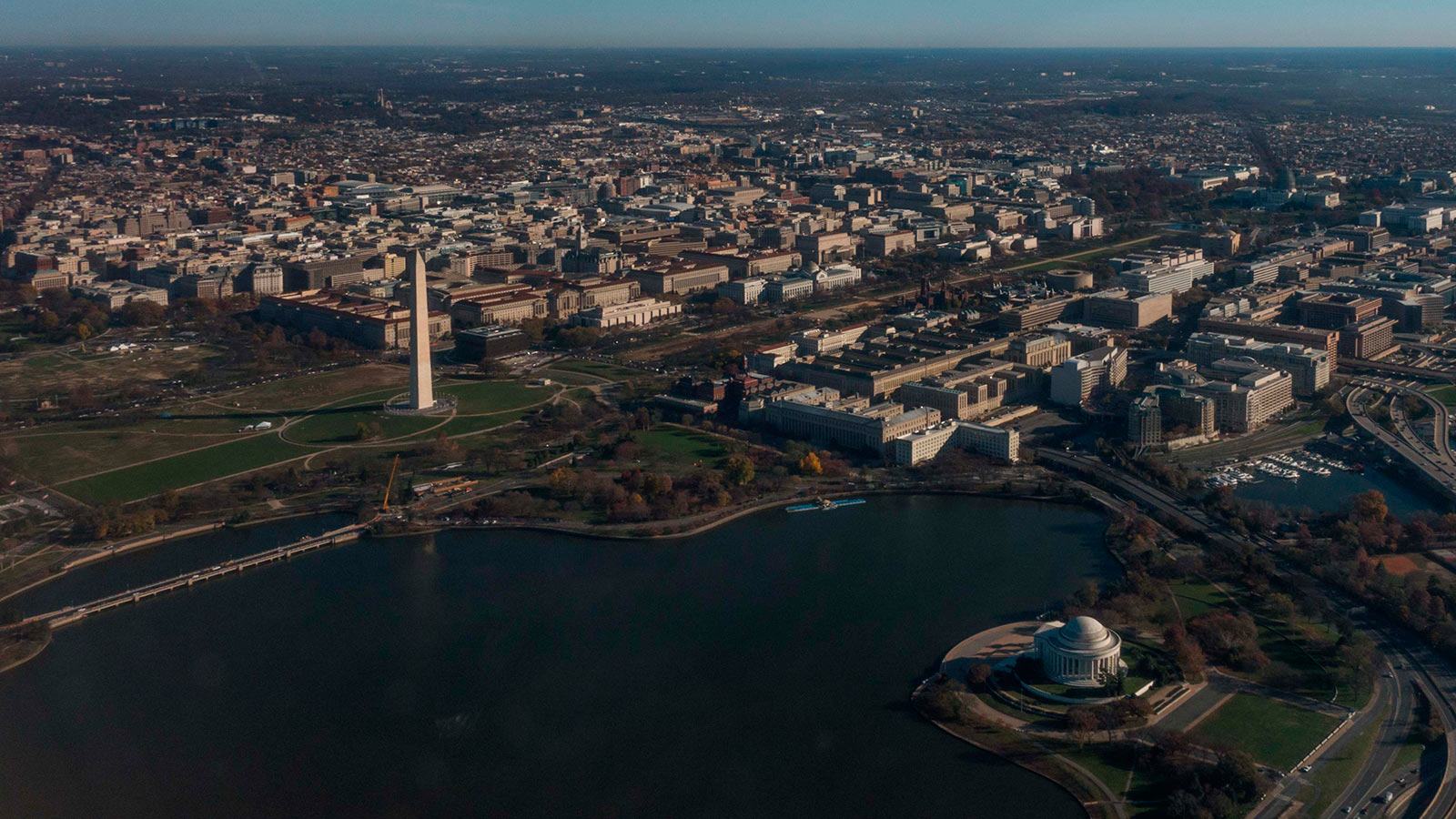
His Later Years in Washington, D.C.
His latter years were in Washington, D.C. The Freedman's Saving Bank was bankrupt on June 29, 1874. This was a few months after Douglass was its president in late March. During this same economic crisis, his final newspaper, The New National Era, failed in September. When Republican Rutherford B. Hayes was President, Douglass accepted an appointment as United States Marshall for the District of Columbia. This helped assure his family's financial security. In 1877, Douglass visited Thomas Auld. He was on his deathbed. The two men reconciled. Douglass had met Auld's daughter who was Amanda Auld Seas. Years prior, she had requested the meeting. She had subsequently attended and cheered one of Douglass's speeches. Her father complimented her for reaching out to Douglass. The visit was closure to Douglass, but many criticized this effort. During 1877, Douglass brought the house which was to be the family's final home in Washington, D.C. It was on a hill above the Anacostia River. He and Anna named it Cedar Hill. They expanded the house from 14 to 21 rooms. There was china closet there too. In 1878, Douglass purchases adjoining lots and expanded the property to 15 acres (or 61,000 m²). The home is now preserved as the Frederick Douglass National Historic Site. His late published edition of his autobiography, The Life and Times of Frederick Douglass, was created in 1881. He also received another political appointment. He was the Recorder of Deeds for the District of Columbia. Frederick Douglass
worked with the activist Ida B. Wells too. Ida B. Wells was a great hero who fought lynching and believed in black human justice. Douglass continued to speak. He went abroad. He traveled with Helen to England, Ireland, France, Italy, Egypt, and Greece from 1886 and 1887. He advocated Irish Home Rule and supported Charles Stewart Parnell in Ireland. At the 1888 Republican National Convention, Frederick Douglass was the first African American to receive a vote for President of the United States in a major party's roll call vote. In that same year, he spoke at the Claflin College. That was a black college in Orangeburg, South Carolina and the oldest of such of an institution in the state.
Many African Americans called the Exodusters escaped the Klan and racially discriminatory laws in the South by moving into large northerm cities plus places like Kansas. In Kansas, many people formed all black towns as a way for them to have a greater level of freedom and autonomy. Douglass didn't favor this, but autonomous black communities are not equivalent to forcing every black person out of America. He didn't agree with the Back to Africa movement. He believed that it was similar to the American Colonization Society he had fought in his youth. In 1892, at an Indianapolis conference convened by Bishop Henry McNeal Turner, Douglass spoke out against the separatist movements, urging blacks to stick it out. He made similar speeches as early as 1879, and was criticized both by fellow leaders and some audiences even booed him for this position. Speaking in Baltimore in 1894, Douglass said, "I hope and trust all will come out right in the end, but the immediate future looks dark and troubled. I cannot shut my eyes to the ugly facts before me."
President Harrison appointed Douglass to be the United States's minister resident and consul-general to the Republic of Haiti and Chargé d'affaires for Santo Domingoin 1889, but Douglass resigned the commission in July 1891. In 1893, Haiti made Douglass a co-commissioner of its pavilion at the World's Columbian Exposition in Chicago.
In 1892, Douglass constructed rental housing for black human beings, now known as Douglass Place, in the Fells Point area of Baltimore. The complex still exists, and in 2003 was listed on the National Register of Historic Places.

His Passing
On February 20, 1895, Frederick Douglass was attending a meeting of the National Council of Women in Washington, D.C. During that meeting, he was brought to the platform and received a standing ovation. When he returned home, Frederick Douglass passed away as a product of a massive heart attack. He was 77 years old. His funeral was held at the Metropolitan African Methodist Episcopal Church. Thousands of people were there. They passed by his coffin to show their respect. Douglass attended many churches in D.C. and he had a pew there. He donated 2 standing candelabras when that church moved into a new building in 1886. He also gave many lecturers there. His last major speech, "The Lesson of the Hour." Douglass' coffin was transported back to Rochester, New York. This is the place where had lived for 25 years which was longer than anywhere else in his life. He was buried next to Anna in the Douglass family plot of Mount Hope Cemetery. Helen joined them in 1903. He belongs to the ages. The Frederick Douglass Memorial Bridge was built in 1950 in his honor. It is also called the South Capitol Street Bridge. His home in Anacostia (in Washington, D.C.) became part of the National Park System. In 1988, it was designated the Frederick Douglass National Historic Site. In 1965, the U.S. Postal Service honored Douglass with a stamp in the Prominent Americans series. The Frederick Douglass Institute is a West Chester University program for advancing multicultural studies across the curriculum and for deepening the intellectual heritage of Frederick Douglass.
On June 19, 2013, a statue of Douglass by Maryland artist Steven Weitzman was unveiled in the United States Capitol Visitor Center as part of the National Statuary Hall Collection, the first statue representing the District of Columbia. On September 15, 2014, under the leadership of Governor Martin O'Malley a portrait of Frederick Douglass was unveiled at his official residence in Annapolis, MD. This painting, by artist Simmie Knox, is the first African American portrait to grace the walls of Government House. Commissioned by Eddie C. Brown, founder of Brown Capital Management, LLC, the painting was presented at a reception by the Governor. On October 18, 2016, the Council of the District of Columbia voted that the city's new name as a State is to be "Washington, D.C.", and that "D.C." is to stand for "Douglass Commonwealth."


Legacy and Conclusion
Frederick Douglass lived to be almost 100 years old on this Earth. He courageously fought against slavery and he stood up for the rights of women. Frederick Douglass was one of the most revolutionary black men in human history. He constantly was giving speeches, inspiring Union black troops, and defending the rights of immigrants. Frederick Douglass united with fellow freedom fighters overseas and he always had a love of black people. His first wife Anna Douglas was a fellow activist who always defending him and she heroically advanced the principle of human freedom. Always working, Frederick Douglass never wavered in her fundamental views. He not only disagreed with slavery. He opposed the death penalty, she wanted women to have the right to vote, and desired total equality in all functions of society. Firm in his views and compassionate in his spirit, Frederick Douglass made magnificent contributions in the overall black freedom movement. A legacy of power and monumental social change outline the characteristics of the life of Frederick Douglass. He was a father and a man who saw wrong and sought to eliminate it. Frederick Douglass was totally inspired to make change and he lived to ensure that future generations would live in a better existence than during the past.
Rest in Power Brother Frederick Douglass.
By Timothy
No comments:
Post a Comment